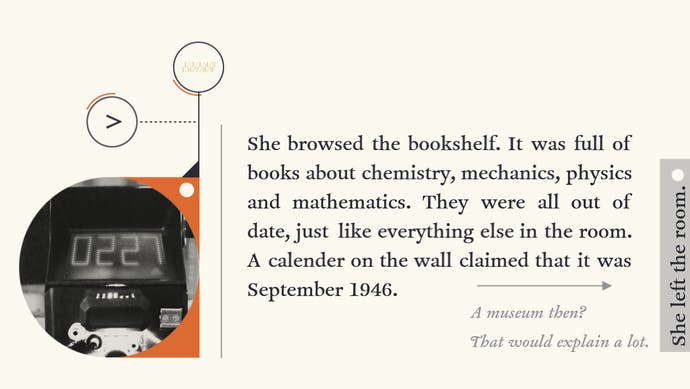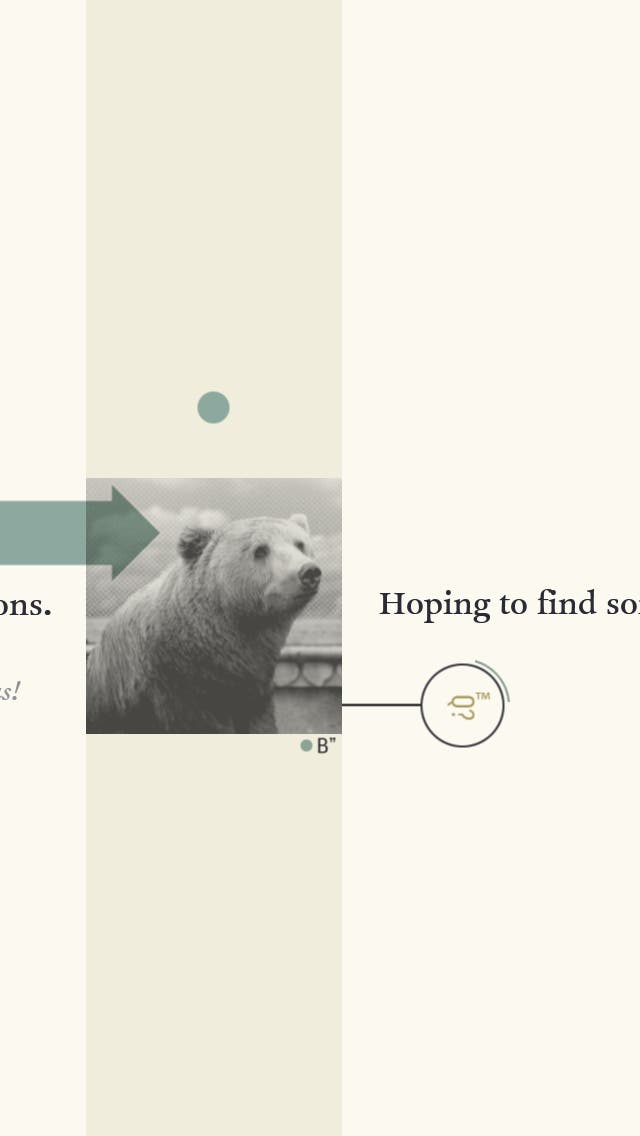Device 6: Adventure texts
The follow-up to Year Walk offers a strange journey into the worlds of Zelda, Cronenberg, Mercator and The Prisoner.
In the beginning was the word. Words made the world and everything in it. Words made oceans surrounding a slope-backed island, and they made the steep, jutting rock of the island itself. They made a game, of sorts, and they made the landscape for the game to play out across. They made the characters in the game - all but one of them - and they provided puzzles for that final, missing character to work their way through. The end result? The end result is a game that has its developer laughing and shrugging as he tries to explain things to me. "It turns out that it's one of those games that is surprisingly hard to talk about."
So much for words, eh? Not quite.
Device 6 isn't a sequel to Year Walk, Simogo's wonderfully creepy dream-logic treat from a few months back, but it is a continued exploration of some of Year Walk's deeper preoccupations. It's another adventure game with puzzles in it, if you feel the need to cling, awkwardly, to the kind of genres that never really apply in such territory. It's a narrative game in which the text of the narrative has been pulled to the surface.
This narrative revolves around Anna, a woman who wakes up one day in a castle on a mysterious island in the middle of nowhere, with no idea how she got there. There's another, seemingly identical castle on the island, too, and there's a man in a bowler hat. Anna's only memories consist of passing recollections involving "an unusually unpleasant doll".

The amnesiac, the secluded location, the hovering, ill-defined menace - this setup isn't a million miles away from the sort of things you've seen in other games. The delivery for Device 6 seems unique, however: In the beginning was the word. You know, like with House of Leaves, or Winnie the Pooh. In the Hundred Acre Woods, words are such tangible things - here they are teetering at the edge of a sudden drop, there they go, scattered by the breeze. In Device 6, "words are geography," says Simon Flesser, the 'Simo' part of the Simogo. "The story progression and the geography of the game are one and the same."
"At the start it was about progressing through 3D text, and that became too gimmicky," Flesser explains. "We realised then that the main idea that we thought was interesting was linking story progression with geography. When you're progressing in the text you're also moving about in the gameworld. You're forwarding and reversing while you're moving from different rooms and different locations. That's the core idea - the main thing that we think is interesting."
In the current iteration, all of this is delivered in a manner that suggests someone has combined some economics infographics with a few of the Romek Marber Penguin covers from the 1960s: the game's alive with dirty two-colour prints, delicate congregations of text, and stark, rather elegant iconography. The interactive challenges Anna and the player face as they works through the story take the form of 'visions', little glimpses into a 3D world that can be manipulated in various interesting ways. Dimensions rub against one another and cracks start to appear; add the teasing metallic guitar twangs of Daniel Olsen's soundtrack and it's hard not to feel the unblinking gaze and heavy brow of the Number Six weighing on the whole production. I find it tricky to watch the teaser trailer without imagining one of Patrick McGoohan's sharp black shoes crushing a cigarette underfoot.
Alongside The Prisoner, Flesser cites the likes of Franz Kafka, David Cronenberg, Professor Layton and Zelda as major influences. Device 6's true point of origin, however, is the Companion App from Year Walk - a separate download that initially seems to contain additional information for the cold-hearted tale that's unfolding in the main game, before merging playfully with the central puzzles as well as the narrative.
And while Year Walk was mainly concerned with moving around a landscape and interacting with the items you found there, the Companion app was preoccupied with the written word. "A lot of it is maturing, you might say," says Flesser when asked about the manner in which the studio has steadily picked out its own unusual territory. "No, not maturing - getting older. Mainly we have always wanted to do new things - things that we haven't made before or even preferably things nobody else has made before. What did we learn from Year Walk? That we should never do an adventure game again. So that's why the first thing we did afterwards is an adventure game."

"I think we're just stupid," he continues. "We just leap into whatever seems like a good idea at one certain minute and then we just roll along with it. I think we had one week off or about three or four days and then we went back into the next thing. The text stuff from the companion - that seemed like a good place. We said we didn't want to make another adventure game, but it also didn't seem like a good idea to regress or fall back on something that is more of a play thing rather than a story. The main thing we thought was exciting about the Companion App is that you the player are almost given a role within the game. You're playing as a detective within the Year Walk universe. It's not necessarily fourth-wall breaking, but that sense of role-playing we wanted to explore more, having a game universe that is part of the player's reality."
The last piece of the puzzle - for now - is maps. "I generally think that in a game like Zelda, I really love just looking at the map," says Flesser. "I love the overworld map. The main idea of maps as an offspring for our idea is that you're getting a little grasp on a place without being there. It feeds the imagination in the same way as reading a book will do. That's something that a lot of games are not doing - feeding the imagination. That's something we like to do. So for example, in Device 6 a lot of the visions are not showing the most interesting things - instead you get your own picture of what the game world is actually like."
Writability as well as readability, then - and we're back to the written word. (There's also that particular word device, of course, which economically suggests a found object: "I have discovered this thing" it grumbles, "and I am only half sure of what it does.") One of Flesser's favourite books, he admits, is Judith Schalansky's Atlas of Remote Islands: Fifty Islands I Have Not Visited and Never Will. It's a sort of internalising of travel journalism: rather than roving the globe, Schalansky explores the landscapes conjured by scrutinising maps at home - maps that provide a kind of overlaying or doubling of realities, a window into an imaginative space that also exists as a real place.
"If you had this book and you had to turn it into a game, how would you find the game element within this?" asks Flesser, by way of conclusion. "I think that's super interesting. You feel like you're exploring something virtually. That is exactly the thing that's great about that book."
He laughs. "I love it."


